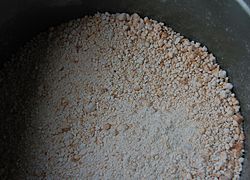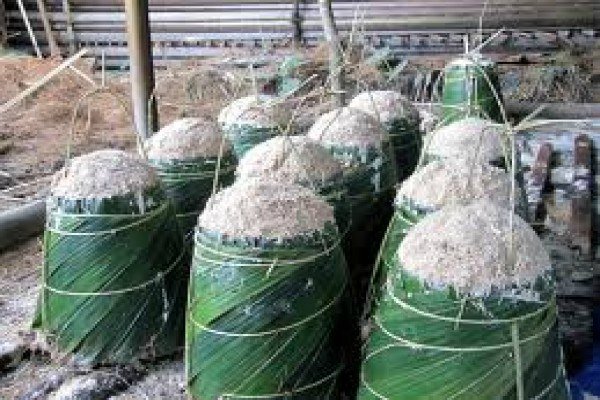SAGO AS ALTERNATIVE ENERGY SOURCE
The potential of sago (Metroxylon sagu Rottb.) As a source of food and industrial materials has been realized since the 1970s, but until now sago plant development in Indonesia is still running in place. Sago is native to Indonesia. It is believed that the center of sago origin is around Lake Sentani, Jayapura District, Papua. In that place found the highest sago germplasm diversity. The largest sago area is found in Papua (1.2 million ha) and Papua New Guinea (1.0 million ha), which accounts for 90% of the world's total sago area. Sago plants are scattered in the wet tropics of Southeast Asia and Oceania, mainly grown on swampy, brackish or often waterlogged fields.
Sago trunks are felled before the flowering plants, when the highest content of the statue. After the trees are felled, the stalks are processed to obtain starch (starch) sago. Sago flour contains 27% amylose and 73% amylopectin. The content of calories, carbohydrates, protein, and fat of sago flour is equivalent to other carbohydrate-producing starch.
 Productive But Old
Compared with other carbohydrate-producing plants, the main advantage of sago plant is its high productivity. Well-managed sago production can reach 25 tons of dry starch / ha / year. This productivity is equivalent to sugar cane, but is higher than that of cassava and potatoes with the productivity of 10-15 t / ha / year.
Sago is an annual crop. With one planting, sago will continue to produce sustainably for decades. Other carbohydrate-producing plants such as rice, corn, cassava, and sugar cane are seasonal crops. However, for the first harvest at least have to wait 8 years. This unproductive period can be reduced by using large seedling seedlings. Sago grows well on marginal land such as peat, swamp, brackish or inundated land where other plants are unable to grow. Therefore, the development of sago for bioethanol production will not interfere with other carbohydrate-producing plants for national food security.
The sago harvest is relatively easy, ie the trees are cut down, the stems are cut into pieces then swept away to the processing plant. It's just stem sago heavy enough, an average of 1 ton, so a constraint in transportation to the processing. In addition, the location of natural stands (forests) of sago is generally isolated and present in wetlands making it difficult to reach.
Development Prospects
Sago starch is a staple food of indigenous people of Maluku and Papua, especially those living in lowland areas. In the future, sago flour will be widely used for industrial purposes, such as baking, noodle, cake, high fructose syrup, adhesive, and biodegradable plastics. Sago starch is also used in the pharmaceutical, cosmetic, paper, ethanol, and textile industries. Meanwhile, sago processing waste can be used as animal feed.
Malaysia has built commercial sago plantations in Sarawak, Johor and Riau, while Indonesia still relies on exploitation of natural stands and semibudi power. Sago growth is naturally feared to be unable to keep pace with logging. Therefore, the development of large-scale commercial sago plantation is a time to think about. It's just that the long period does not produce about 8 years become an obstacle for entrepreneurs to jump in this field. The role of financial institutions in providing long-term soft loans is desirable.
Potential of Sago as Energy Source
The estimated total production potential of Indonesian sago is still very crude, as it relates to the size of the sago area, the number of trees that can be harvested per hectare per year, and the production of dried starch per tree. Most of the sago area in Indonesia is a natural stand so the productivity is very diverse. The potential of sago production in Indonesia is estimated to be around 5 million tons of dried starch per year. Consumption of domestic sago starch is only about 210 tons or just 4-5% of the production potential.
If carbohydrate saving in Indonesian sago forest can be optimally utilized for bioethanol, bioethanol 3 million kiloliters per year can be obtained with assumption of conversion factor 0,6. National premium needs are estimated at around 16 million kiloliters per year. If bioethanol can replace a premium of about 10% (a mixture of premium and ethanol 90:10) then it takes ethanol as much as 1.6 million kiloliters. This need can be met from sago starch only.
Of course this figure is not realistic because it is very difficult to exploit the entire potential of sago forest considering the location of the natural stand of sago is remote and difficult to reach. Some of the bioethanol needs can be met from other carbohydrate-producing crops such as cassava, sugarcane and corn, from organic agricultural solid waste, and from commercial sago plantations.
